1801 Draped Bust Large Cent S-223 Die State Identification
 Aotearoa
Posts: 1,578 ✭✭✭✭✭
Aotearoa
Posts: 1,578 ✭✭✭✭✭
I've been perusing photos on Heritage and in various old auction catalogs and have come to the conclusion that die state identification for this coin is not very consistent. There seems to be a high level of consensus at the extremes - DS-I and DS-VI - but, in between, things are all over the place.
As a bit of an exercise, I'll post a few pics from my collection; please share your opinions.
Firstly, the extremes. I'm quite confident that this is a DS-1. Please let me know if you disagree.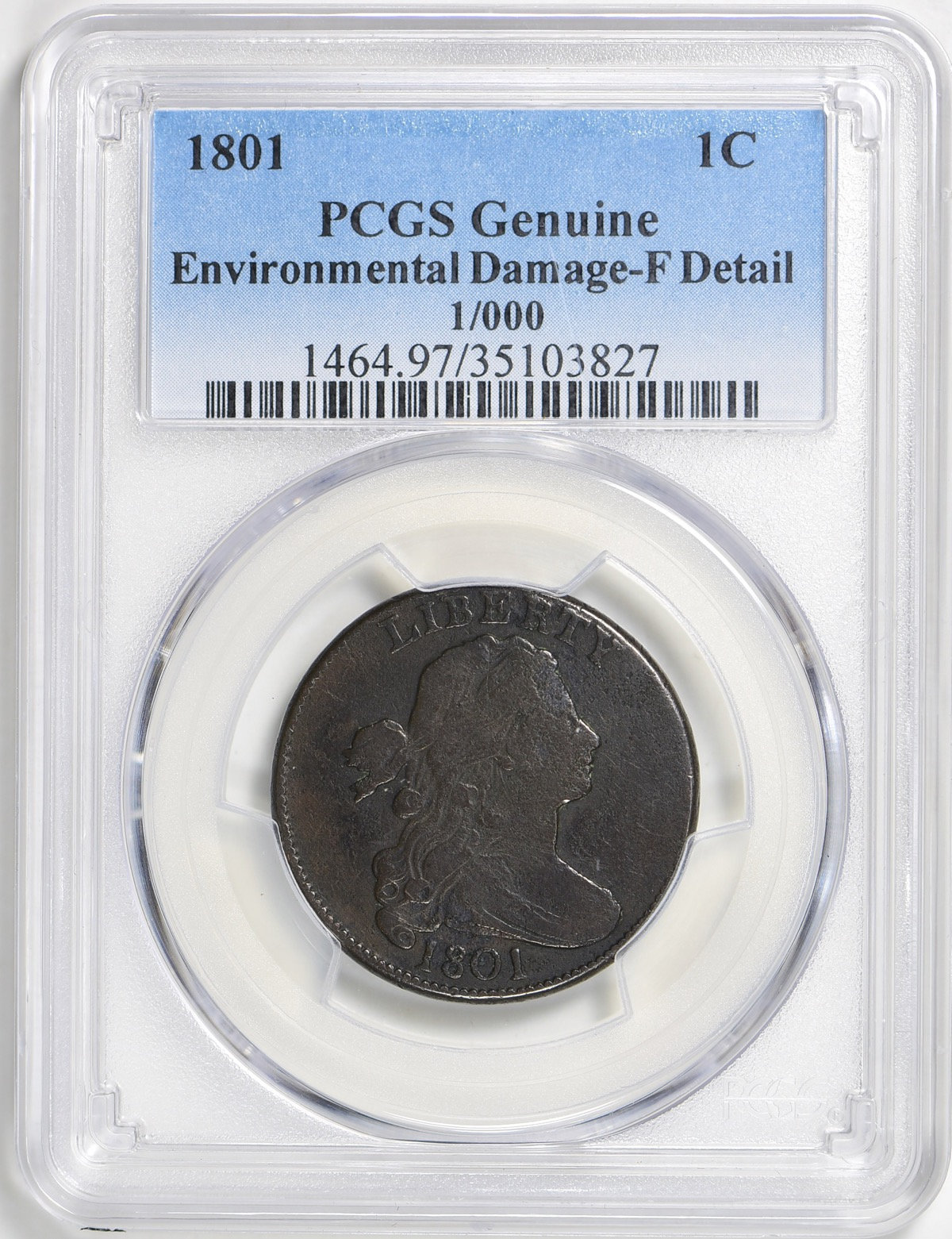
Similarly, I'm quite sure this is a DS-VI: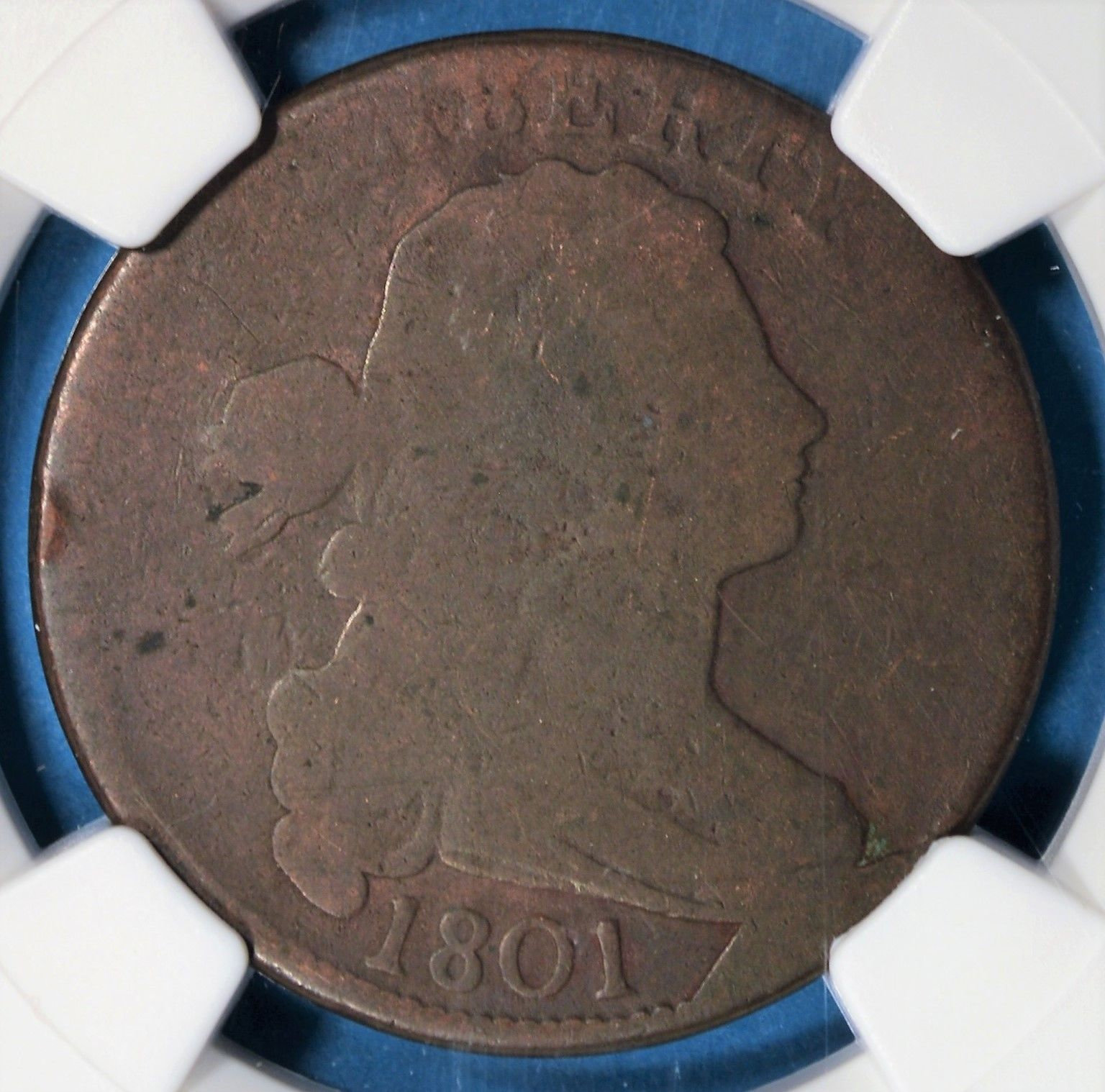
I withhold my opinion on the following.
Coin #3: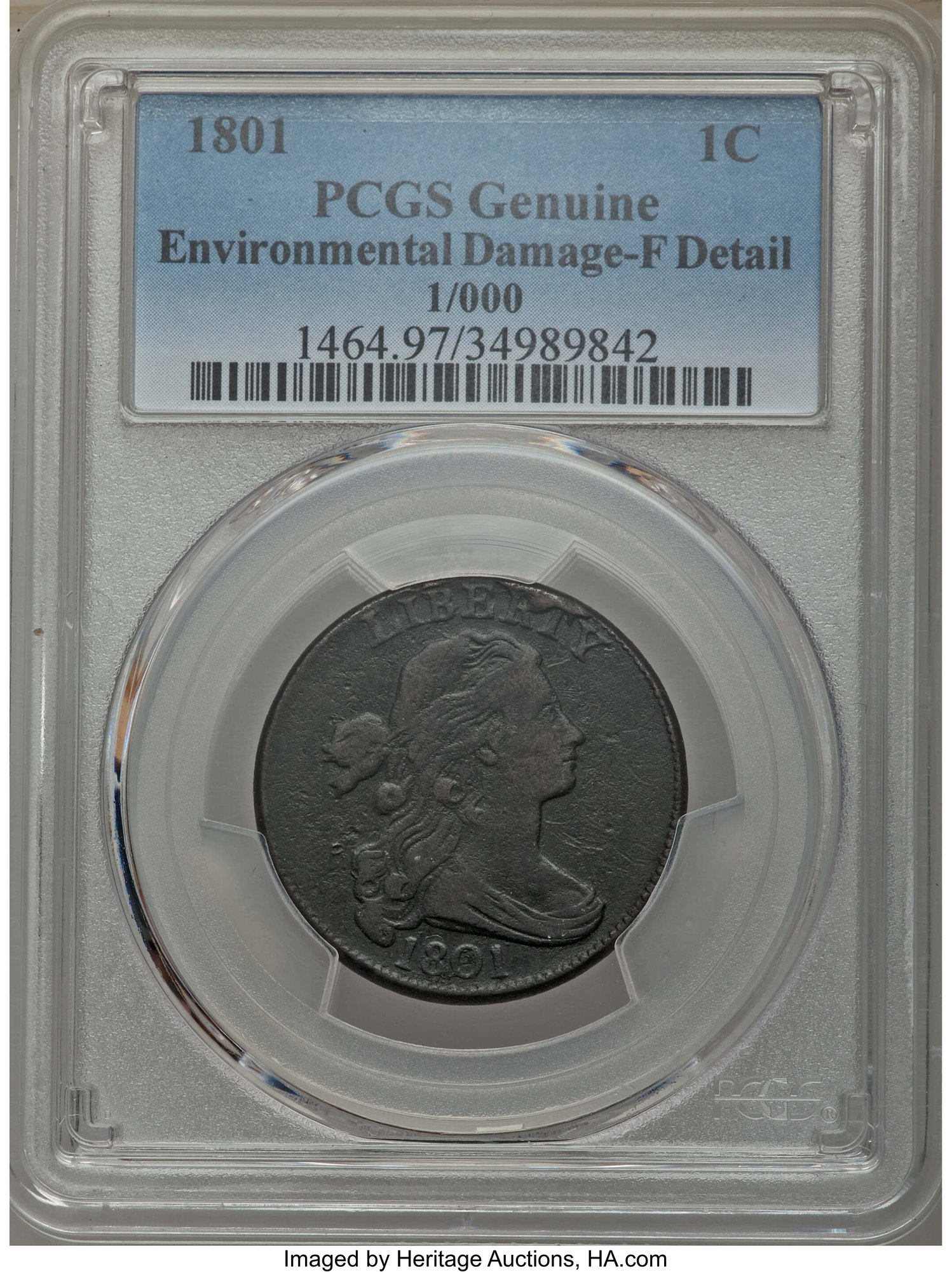
Coin #4: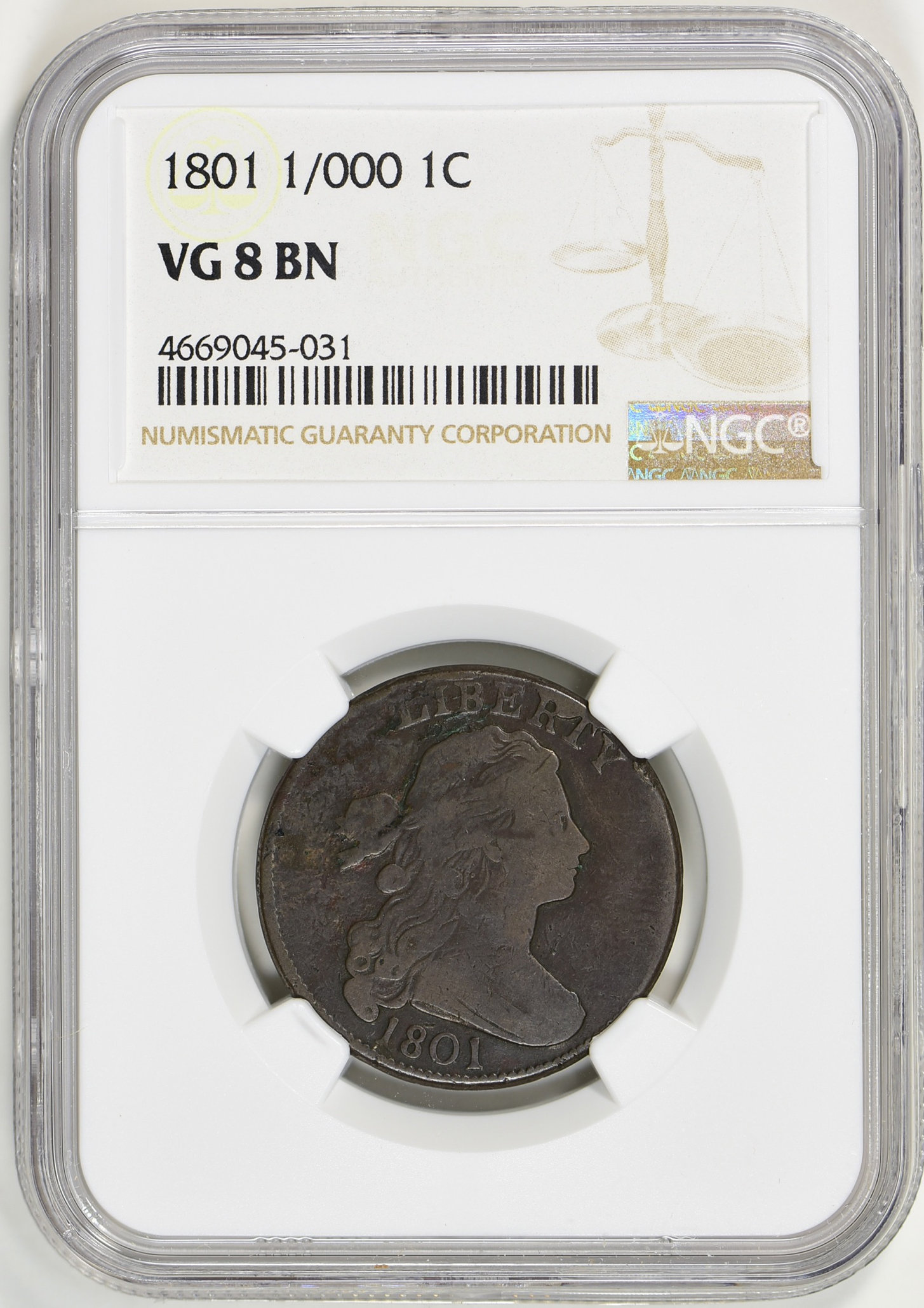
Coin #5: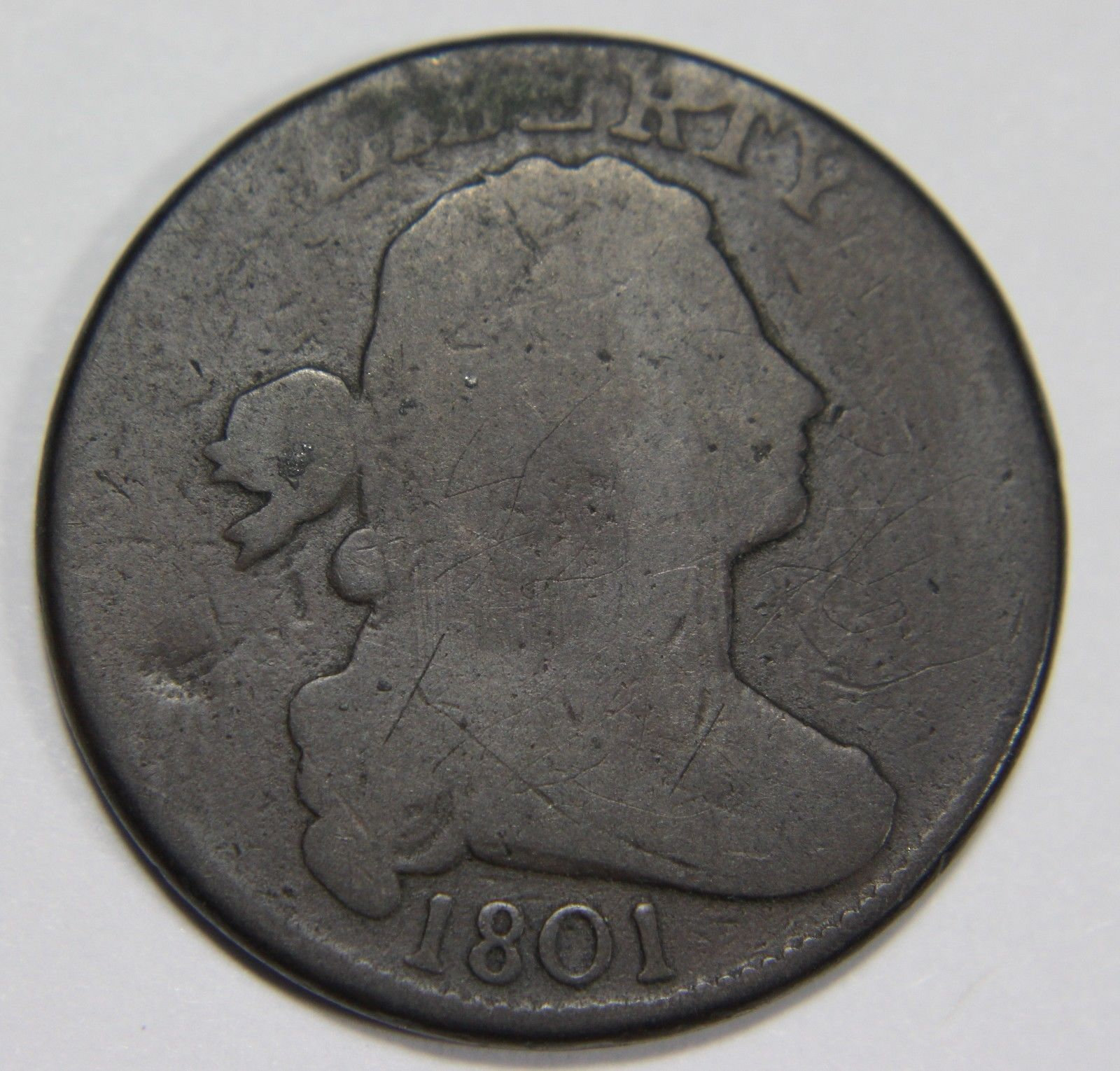
Thanks in advance for your feedback!
Smitten with DBLCs.
0
Comments
.
coin 3, 4, 5 appear as nearly the same state or the same.
coin 2 more like vf+ detail.
coin 1 double obv cud, pretty neat and late state. would be interesting to see any coins much later than that, if they are out there.
.
That's actually coin #2 but I don't think they get much later than that in terms of die state.
I find Breen's descriptions to be pretty vague. I'd be keen to see a more descriptive (with photos?) attribution guide. Does such a thing exist?
@burfle23
@Conder101
@MikeInFL
Smitten with DBLCs.
ty. fixed.
.
My contribution, from my collection- not sure if this would be a late die state II or an early III....I’ll let you experts decide:
@Walkerguy21D, you indirectly make a point that needs to be kept front of mind: Die states are on a continuum. I think your example could go either way. The rim break seems to be more than "on the very tops of RT" (II) but one could argue that it does not "fully extend down the outer curve of R" (III). With that said, I think it's closer to III.
Smitten with DBLCs.
Aotearoa, Noyes photographs die states in his very descriptive books; I do not own the volume that includes S-223 though.
Thanks but do you truly mean die state or are you referring to die variety? I do have Noyes' "United States Large Cents 1793-1814" book which I use for die variety attribution. I've been relying on Breen's book for die state attribution. Is there a Noyes reference I'm missing?
Smitten with DBLCs.
I'm probably coming across as argumentative now but I assure you that is not my intention! I do realise that Noyes has assigned "collectible die states" but it also seems to me that these are not the die states generally referenced by collectors. Rather it is the Breen classifications with their Roman numerals that are most often seen (examples below). It probably doesn't exist, but a Breen reference guide with photos would be great. Thanks!
https://coins.ha.com/itm/large-cents/1801-1c-1-000-s-223-b-17-r1-xf40-pcgs/a/1256-3035.s?ic4=GalleryView-Thumbnail-071515
http://images.goldbergauctions.com/php/chap_auc.php?site=1&lang=1&sale=54&chapter=4&page=1
Smitten with DBLCs.
I would suggest to you something that may cost a bit of money
to aquire, but would help you. Try to get a hold of several auction
sales catalogs that have some mid to hi profile sales of early cents.
Such as The Dan Holmes Coll. Part I & II from his sale of 2009 & 2010.
The Husak Coll. of 2008.
The Wes Rasmussen Coll. Jan 2005.
The Adam Mervis Large Cent Coll. Jan 2014.
The Jules Reiver Coll. jan 2006.
Most of these catalogs have well written discusions of the pieces with
die state info.
There are many others, some good, some exceptional.
Further, visit the Newman Numismatic Portal that can direct you to
auctions listings that describe early coins, their descriptions & die states,
with large images.
Also, when asking for assistance about a coin , please show both sides
with large images.
Good luck
R.I.P. Bear